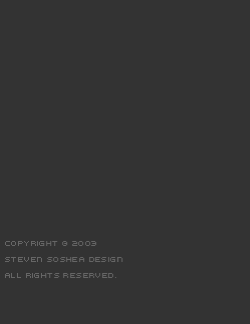
 |
By having a more open and conditional perspective to design, the methodology of Organic Multiplicity has a number of beneficial strengths, in relation to the practice and culture of design. Since
Organic Multiplicity is not dogmatic about a specific theory or
visual representation, its methodology does not create walls or
barriers in its application. Design participants are free to explore
a more pertinent and heterogeneous conceptual environment in the
solution building process, without compromising any group affiliation
or distinct individual expression. Designers can express and align
themselves in any manner appropriate to the creation of a viable
solution. This
openness will enhance the depth and expressiveness of a design solution.
By
having a broad landscape in which to investigative relevant contextual
environments, a greater opportunity for innovative design is created.
Subtle relationships or interconnections can be recognized and interpreted,
that might have otherwise been missed in a more rigid and narrow
approach to design. |
 |